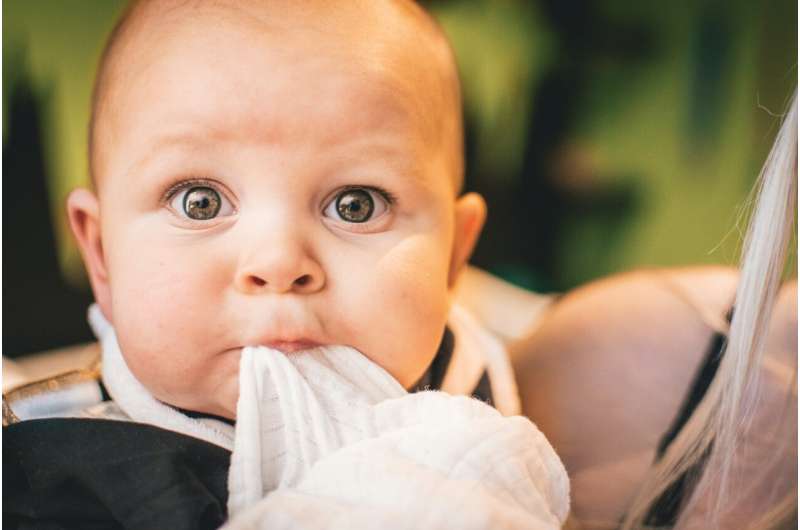This article has been reviewed according to Science X's editorial process and policies. Editors have highlighted the following attributes while ensuring the content's credibility:
fact-checked
trusted source
proofread
Baby's first tooth? Time for a visit to the dentist

About 1 in 5 children in the U.S. between the ages of 2 and 5 will develop at least one cavity, according to the Centers for Disease Control and Prevention—and the rate of tooth decay only becomes higher as children get older. The results are far more than cosmetic: Poor oral health affects children's nutrition, speech, and ability to learn, among other things.
The good news is that dental decay is preventable, and there is much parents can do to ensure a lifetime of happy and healthy smiles, says Cheen Loo, professor and chair of pediatric dentistry at Tufts University School of Dental Medicine. She offers some advice:
Start early
The American Academy of Pediatric Dentistry recommends a child's first dental appointment should be soon after that first pearly little tooth appears, or at least by a child's first birthday.
The visit is not so much for the baby or toddler in the chair, as for the parents, Loo says. Like an early pediatrician appointment, "it's for us to provide education to the parent about how to take care of the teeth and what they can anticipate," Loo says.
Emergency preparedness
Very young children often fall or bang into something, injuring their teeth or gums. That's another reason it's good to have an established relationship with a dental office early on, "because otherwise, you'll be trying to figure out where to go, who do you contact" as your child is hurt or bleeding, Loo says.
There's always the hospital emergency room, she says, "but if it's a bigger emergency department, dental trauma is not as high a priority," and you'll be spending a lot of time in the waiting area. A dentist who already knows your child may be able to offer advice over the phone and decide whether the youngster needs to be seen immediately.
Toothbrush time
Even the newest baby tooth should be cleaned with a toothbrush, Loo says; the tradition of using a washcloth to clean little teeth simply isn't as effective.
For children younger than 3, use a smear of fluoridated toothpaste, about the size of a grain of rice. For children older than 3, think the size of a green pea. It's important not to let children swallow toothpaste, Loo says, so parents should be the ones to put the toothpaste on the brush, and to supervise toothbrushing. Children should brush twice a day, morning and night.
Fluoride is fine
The preferred option for all children is toothpaste that contains fluoride, Loo says. In the case of small children who can't help swallowing the toothpaste, or for parents who are uncomfortable using fluoride for toddlers, Loo says she'll look at the child's risk factors for cavities, which can include whether they brush regularly; if they're eating a well-balanced diet that's not high in foods known to cause cavities; if they come for dental checkups every six months.
"If the child is not at high risk for cavities, it's fine to stick with the fluoride-free toothpaste," she says. But by about age 5 or 6, fluoride is the way to go to help prevent decay. "There really isn't solid evidence that fluoride can cause adverse outcomes when appropriate amounts are used," she says.
Easing teething
To relieve teething pain, Loo recommends "good old-fashioned teething rings," especially if refrigerated so that they are cool on the gums. Stay away from teething necklaces and beads, as they are a choking hazard.
Most once-popular teething medications, including those advertised as all-natural, have been taken off the market, and Loo advises against using over-the-counter products.
Off the bottle
Extensive use of bottles and sippy cups can interfere with jaw development, Loo says. For that reason, dental professionals recommend that youngsters be weaned off a bottle by age 1, and that they stop using sippy cups—particularly for juice or other sugary liquids—by age 2. By age 3, children should stop using pacifiers or sucking their thumbs.
"It changes the shape of the jaw if they are sucking on these things," Loo says. And while using a straw isn't as bad, access to unlimited sugary beverages poses a risk to oral health regardless of how it's consumed.




















